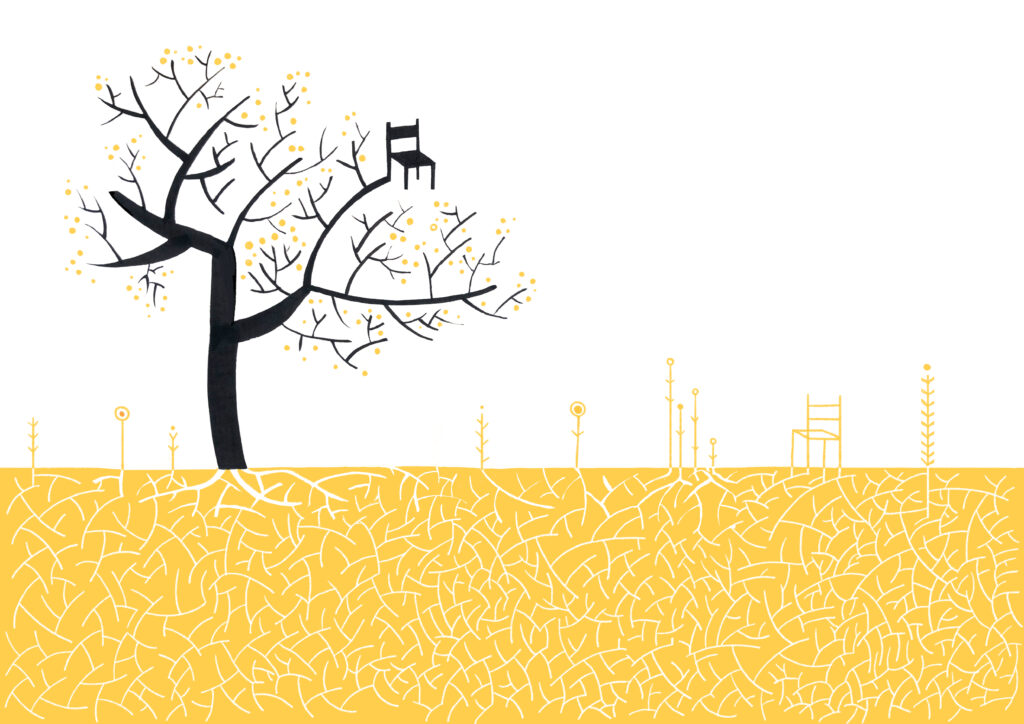
“Humility makes you a true human.”
― Arundhati Roy
Composing this piece on humility has been a rather torturous process as we would normally prefer to write about a topic with a clearer path or direction, and illustrate some attempts we have made, or have witnessed elsewhere, in practising it. But humility is a big one and it encompasses almost everything that we have written about in previous posts.
Through this writing, we are in no way suggesting we know how to practise any of the things we discuss; rather, we want to share how we aspire to think, to change, to experiment, and what we feel might be necessary ingredients for progress. Because at its core, we believe we cannot fundamentally reshape our work, and by extension, our world, without these elements. And to do that, we need a space for questioning.
So in this post, we want to look at what humility actually means and what it might look like in the work of nonprofits. The idea that we need to show humility is not a new concept and is increasingly being talked about in various spaces. But what do we really understand of it? Is it just another branding exercise?
Our sector has a long history of preaching, believing societal problems can be solved by good intentions, charity or goodwill. The language may have changed, but much of the work and how it’s delivered is still based on those same foundations. This shows the exact opposite of humility.
So what does humility mean? According to Merriam-Webster, the definition of humility is “freedom from pride or arrogance: the quality or state of being humble.” Being humble also relates to being low and close to the ground, down to earth. But we must not confuse humility with low self-esteem. Like arrogance, low self-esteem is the ego at work. Being close to the ground means having a solid foundation, which means trusting ourselves, having confidence. It is from there that we can open up.
These ideas have been around for thousands of years, found within indigenous traditions, many Eastern philosophical traditions, and in various religious texts. We see some of these principles discovered from ancient wisdom seeping into modern marketing language, slapped onto websites as if practising humility is simply a decision you need to make, not a fundamental change in how we are in the world and how we do our work.
Simply put: when we hear calls for decolonisation, reparations, reckoning, challenging racism, checking our privilege, our task is first and foremost to come to the ground and show humility. Then we enter into a space that allows us to see where we are in the broader context more clearly, and understand what our responsibilities are.
Humility is an essential quality to develop within many traditional martial arts, which can easily be adapted in our work. For example, in his book detailing how martial virtues provide lessons in wisdom, courage and compassion, Charles Hackney says ingredients of humility include an accurate assessment of one’s abilities and achievements, an ability to acknowledge one’s mistakes, imperfections, gaps in knowledge, while also being open to new ideas, contradictory information, and advice.
In a recent conversation challenging the work done in the child welfare and child rights programming spaces, Dr Catherine Love also makes the case for practising humility in order to confront colonialism, racism and patriarchy, as it “allows us to open our eyes and open our ears to understand and value other people’s points of views.”
Indigenous Lawyer and Activist, Sherri Mitchell explains that in tribal traditions, humility is a requirement in a leader. Sadly today “possessing accurate information, speaking with honesty, and acting with integrity are less valued than a powerfully stated opposing view.”
Last week’s post on curiosity discusses the desire to seek knowledge, and also recognise our ignorance. But we cannot do this until we learn to listen, until we become grounded, open and until that curiosity isn’t about seeking an answer or filling a gap in our knowledge, but a way of being.
All of this is hard work, because it’s also very personal work; it requires us to question and confront why we got into this work in the first place.
In the words of Margaret Wheatley, “Humility is a brave act–we have to admit that we don’t know enough to solve the problem … but it is the door we must walk through to find the place of true solutions.”
Words, Veronica Yates and illustration, Miriam Sugranyes
